That's So (Un)Professional!
Yesterday I was called by a long time client of mine, looking for a portrait. "The one we took with our office digital camera just doesn't look good. Our client saw it in print, and didn't like the way she looked." I said, "You took a picture of a client with an office point and shoot and submitted it to a publication?" Somewhat sheepishly, she said "Yes." Now, this person, who has moved from firm to firm, is someone I like, and respect. Yet, someone convinced someone that doing this was acceptable. And the end result? An unhappy client that could only be satisfied once a professional was brought in.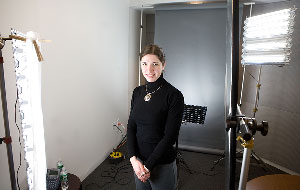 Enter me. To the right you'll see the standard setup (with my assistant Lauren standing in). Main light, kicker light, reflector, and backdrop illumination. This is such a workhorse setup, and one we do consistently around town that this kit is dedicated to doing so. These lights you'll see in detail and in use on my Flickr pool here, and to get to them directly, visit Rololight. It took about 30 minutes to set lights (leisurely), and in came our subject. Session 1 included her in one jacket/blouse combination, Session 2 with a different one.
Enter me. To the right you'll see the standard setup (with my assistant Lauren standing in). Main light, kicker light, reflector, and backdrop illumination. This is such a workhorse setup, and one we do consistently around town that this kit is dedicated to doing so. These lights you'll see in detail and in use on my Flickr pool here, and to get to them directly, visit Rololight. It took about 30 minutes to set lights (leisurely), and in came our subject. Session 1 included her in one jacket/blouse combination, Session 2 with a different one.  The finished lighting setup (again, with my assistant standing in) is to the right. Total time with camera active, about 15 minutes. Another 20 minutes on the laptop making selections, and the client's client, when I asked "Are you happy with these?" Responded -- "Yeah, that's so...professional! I don't look like I am bug-eyed, like in that other one you {pointing to my longtime client/friend} took that ended up in that newspaper!" I responded "I'm glad we could make these work for you. Thanks!"
The finished lighting setup (again, with my assistant standing in) is to the right. Total time with camera active, about 15 minutes. Another 20 minutes on the laptop making selections, and the client's client, when I asked "Are you happy with these?" Responded -- "Yeah, that's so...professional! I don't look like I am bug-eyed, like in that other one you {pointing to my longtime client/friend} took that ended up in that newspaper!" I responded "I'm glad we could make these work for you. Thanks!"
Often, there is significant value in allowing clients (and clients' clients) to recognize the value we professionals bring to the table. It's not necessary to sell ourselves, rather, it's best to let the quality of the finished product stand on it's own.
Please post your comments by clicking the link below. If you've got questions, please pose them in our Photo Business Forum Flickr Group Discussion Threads.
 How much does 1 Terabyte of drive space cost? Do you care? You should! Let's do some math here:
How much does 1 Terabyte of drive space cost? Do you care? You should! Let's do some math here: 
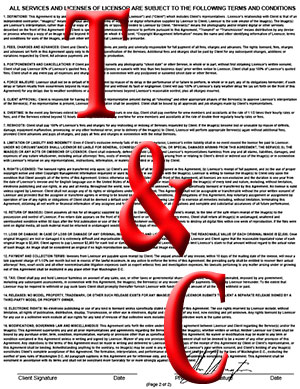 Term #2: "2. FEES, CHARGES AND ADVANCES: Client and Client’s representatives are jointly and severally responsible for full payment of all fees, charges and advances. The rights licensed, fees, charges and advances set forth in this Agreement apply only to the original specification of the Services. Additional fees and charges shall be paid by Client for any subsequent changes, additions or variations requested by Client. All advance payments are due prior to production."
Term #2: "2. FEES, CHARGES AND ADVANCES: Client and Client’s representatives are jointly and severally responsible for full payment of all fees, charges and advances. The rights licensed, fees, charges and advances set forth in this Agreement apply only to the original specification of the Services. Additional fees and charges shall be paid by Client for any subsequent changes, additions or variations requested by Client. All advance payments are due prior to production." 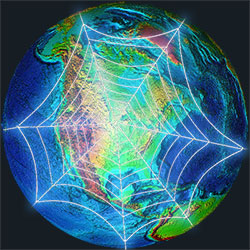 Today was an interesting day. I spent the morning with an electron microscope, the afternoon with an ambassador, and this evening with a Member of Congress. I am currently sitting in the lobby of a hotel that is far more expensive than I can afford, crafting this missive. What prompts me to write today? Oh, the world-wide-web. Yes, that wild-wild-west of the photographic landscape, where people with pictures are under the impression that the fact that they have a JPEG means they can put the photos on Flickr, MySpace, or their own company website. Oh, so wrong.
Today was an interesting day. I spent the morning with an electron microscope, the afternoon with an ambassador, and this evening with a Member of Congress. I am currently sitting in the lobby of a hotel that is far more expensive than I can afford, crafting this missive. What prompts me to write today? Oh, the world-wide-web. Yes, that wild-wild-west of the photographic landscape, where people with pictures are under the impression that the fact that they have a JPEG means they can put the photos on Flickr, MySpace, or their own company website. Oh, so wrong. 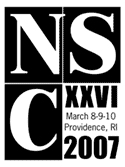 On the road to that little state called Rhode Island. Next Thursday (March 8th & 9th) marks my sixth time presenting at the
On the road to that little state called Rhode Island. Next Thursday (March 8th & 9th) marks my sixth time presenting at the 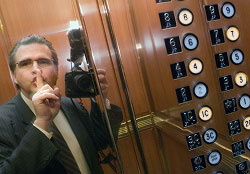 Many a time I've been heading into a client's office for a meeting, and stepped on the elevator with one or two other folks. On the ride up, I was concious that, maybe one or two of the other folks I am in the elevator with may end up being in the meeting with me, so I'd better not say anything that would put me in a poor light. My tie better be adjusted, or I shouldn't be finishing a donut or soda while heading skyward.
Many a time I've been heading into a client's office for a meeting, and stepped on the elevator with one or two other folks. On the ride up, I was concious that, maybe one or two of the other folks I am in the elevator with may end up being in the meeting with me, so I'd better not say anything that would put me in a poor light. My tie better be adjusted, or I shouldn't be finishing a donut or soda while heading skyward.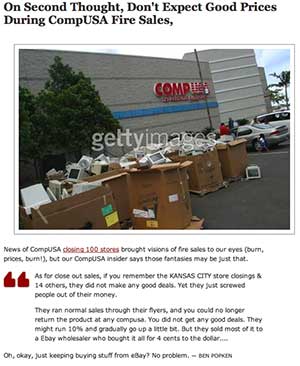 Ok, so, just as I hate it that people are stealing Microsoft's Windows, and Adobe Photoshop, I too get upset when the Galactic Empire's IP gets (allegedly) stolen. Worse yet, it's by an organization I really admire --
Ok, so, just as I hate it that people are stealing Microsoft's Windows, and Adobe Photoshop, I too get upset when the Galactic Empire's IP gets (allegedly) stolen. Worse yet, it's by an organization I really admire --  If that's the case though, then why is this now the article? It's the same article, but the photo has been removed entirely, not replaced with a non-watermarked one.
If that's the case though, then why is this now the article? It's the same article, but the photo has been removed entirely, not replaced with a non-watermarked one. On the heals of that photograph however, comes a bit of history. A search of The Consumerist yields
On the heals of that photograph however, comes a bit of history. A search of The Consumerist yields 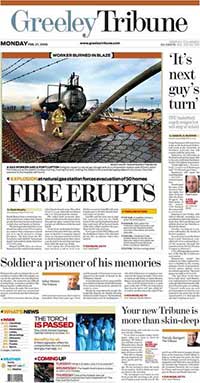 From our friends at the Coloradoan.com, comes this little insight:
From our friends at the Coloradoan.com, comes this little insight: